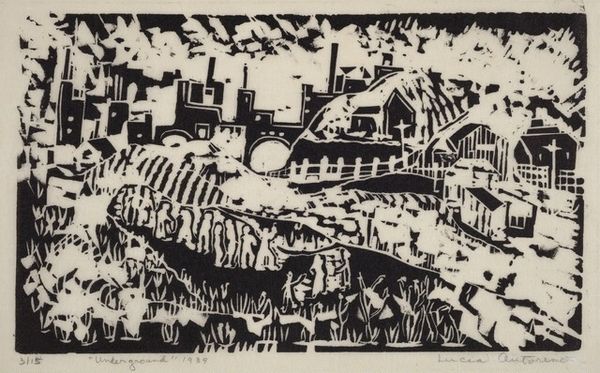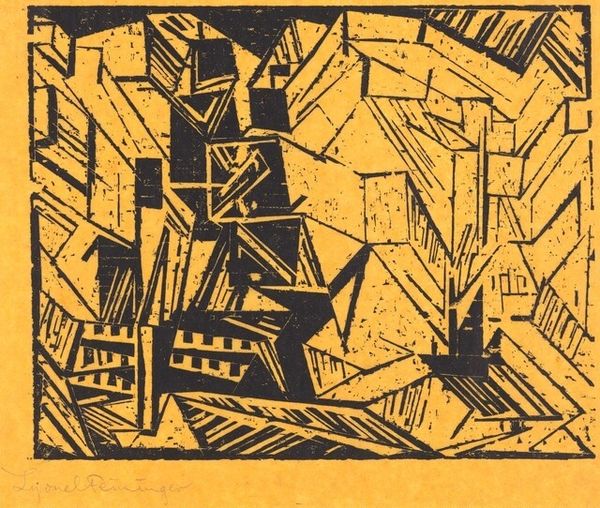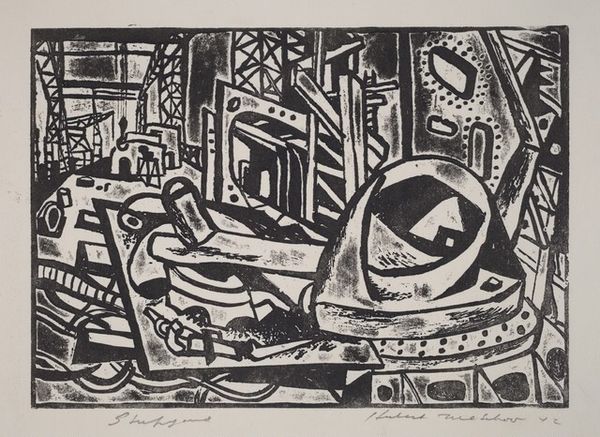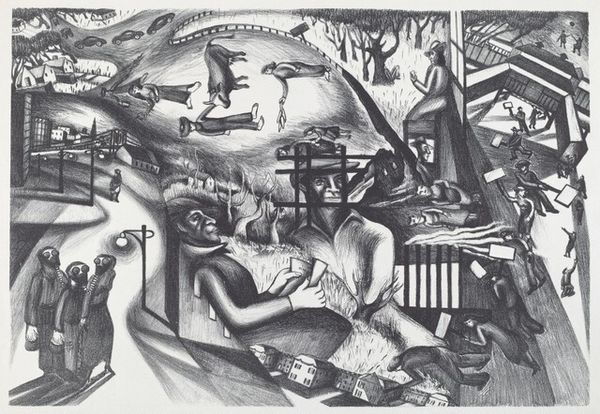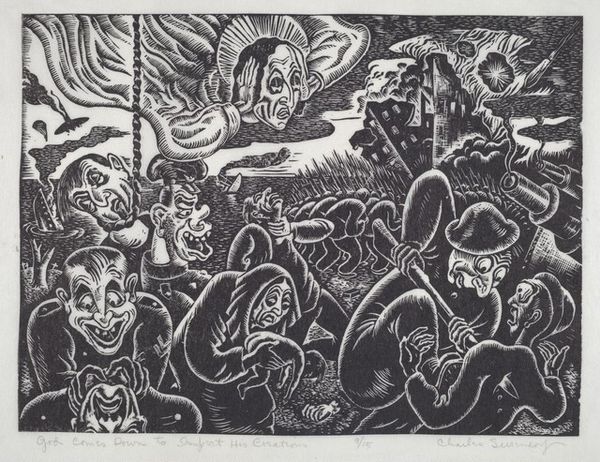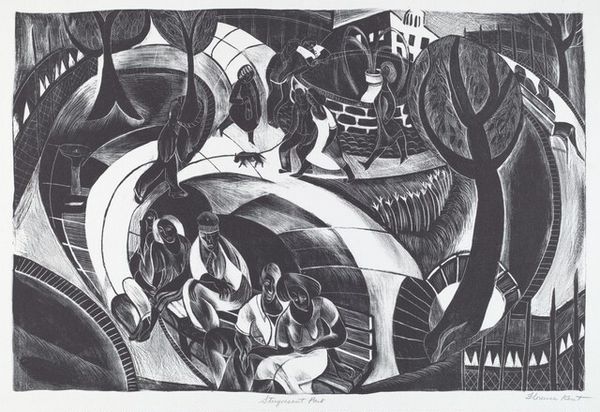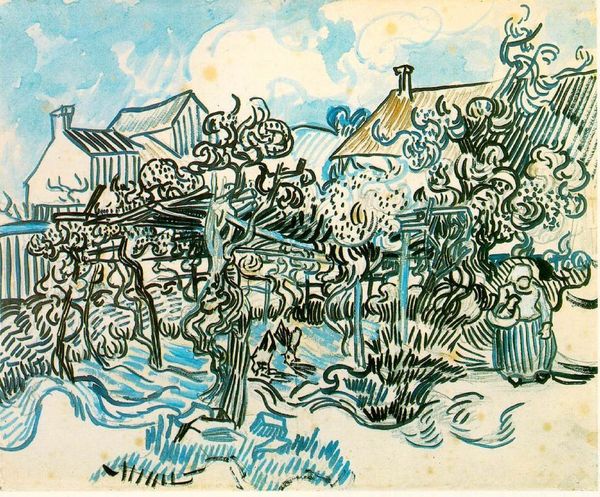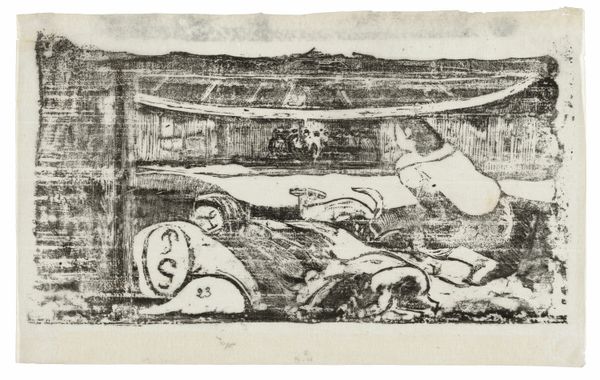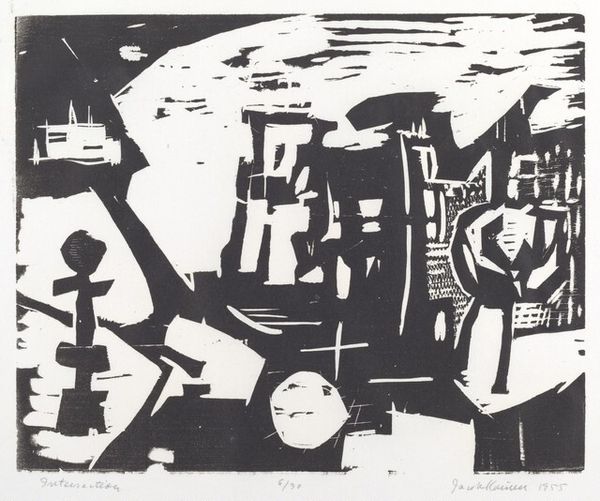
drawing, paper, ink
#
drawing
#
pen illustration
#
paper
#
ink line art
#
ink
#
geometric
#
line
#
sketchbook drawing
#
cityscape
#
futurism
Copyright: Public domain
Curator: Amadeo de Souza-Cardoso's 1912 drawing, "Motion," executed in ink on paper, presents a compelling intersection of futurist aesthetics and early 20th-century urban life. What's your first take? Editor: It’s a delightfully frenetic image! There’s a raw energy, a sense of speed and even chaos, conveyed through these stark lines and somewhat whimsical representations. Curator: Souza-Cardoso’s futurist inclinations are clearly visible here, wouldn’t you agree? Notice how he eschews traditional representation in favor of capturing dynamism and the evolving relationship between humanity and machines. It seems this artwork celebrates new materials of urban life by showing a car’s movement in parallel to animals. Editor: Absolutely, the Futurist celebration of speed and machinery is palpable. The imagery is quite telling – these stylized cars racing alongside horse-drawn carriages, even bicycles, it's the dawn of a new age being worked out. I find the architectural forms behind them equally interesting as they remind of older imagery but appear altered through the lens of industrial progress. It is not merely about motion; it encapsulates cultural transitition! Curator: Look at his lines. There's an almost industrial quality to the ink work – thin, precise lines construct both vehicles and city. The means of production of the piece echo the production happening in the streets portrayed, what do you think of it? Editor: True, there is a sense of deliberate industrial aesthetics, although this could merely come as a reflection from a city in flux that seems restless. Now I think, is there possibly also some symbolism about temporality embedded within the details of this urban snapshot? What else do you find captivating here? Curator: Indeed, the use of such seemingly simple, reproducible lines perhaps alludes to the era's fascination with mass production, with each object sharing equal significance by lines that articulate them. His simplification of form makes one question if the labor behind these forms of transport has changed at all! Editor: It does leave you pondering! Seeing those primitive shapes juxtaposed against somewhat more advanced ones – one cannot deny the symbolic implications about how technology reshapes our perception. It serves to emphasize both humanity's perpetual dance between past and present; each visual element is chosen carefully to express its weight within time! Curator: I leave with new insights about "Motion." Souza-Cardoso really invites us to question both the evolution and production of forms! Editor: And for me, to contemplate the ways in which those seemingly mundane forms carry a load of cultural significance, don't you agree?
Comments
No comments
Be the first to comment and join the conversation on the ultimate creative platform.
